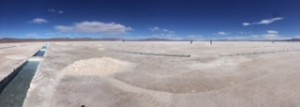We learned that Tango is more than a dance, more than music– it is a language.
We knew that last Thursday night was going to be a long one, but it was completely worth it.
We began our night with a half-hour lesson filled with a lot of joyful mishaps and laughter. Of course, the number of women on this trip completely outnumbers the men. It is 2 to 6, so there were quite a few female couples, which made the night even more entertaining.
Most important lesson we learned: the partners in Tango must be one.
Our instructor, who was one of the stars of the show, told us you can tell if a couple is good based on how the sync of their movements. They speak to each other through music.
The man is to lead the woman and the woman can easily follow by feeling their partner’s shift in balance. That was the hardest part of the lesson to me… and also finding a way to move in a circle and not bump into everyone.
The tango lesson was another great way for us to live the Argentine culture and to actually be apart of it; instead of, observing it. We got to do a lot of that later.
After dinner and a whole lot of wine, a tango show began. Amazing does not even begin to describe the show.
Everyone seemed to enjoy the live music and the interaction of the dancers with the crowd. There were dancers dancing on the bar and they approached the stage from within the crowd. We all were a part of the story.
The story aspect is what I enjoyed the most. Each couple had their own dance, with their own pace, and the dances spoke for themselves, even though their was a screen with scene names.
The dinner was a traditional Argentine meal— BEEF, BEEF, and MORE BEEF (with some salad). Tango night was a night where we all were fully immersed in Argentine culture.




